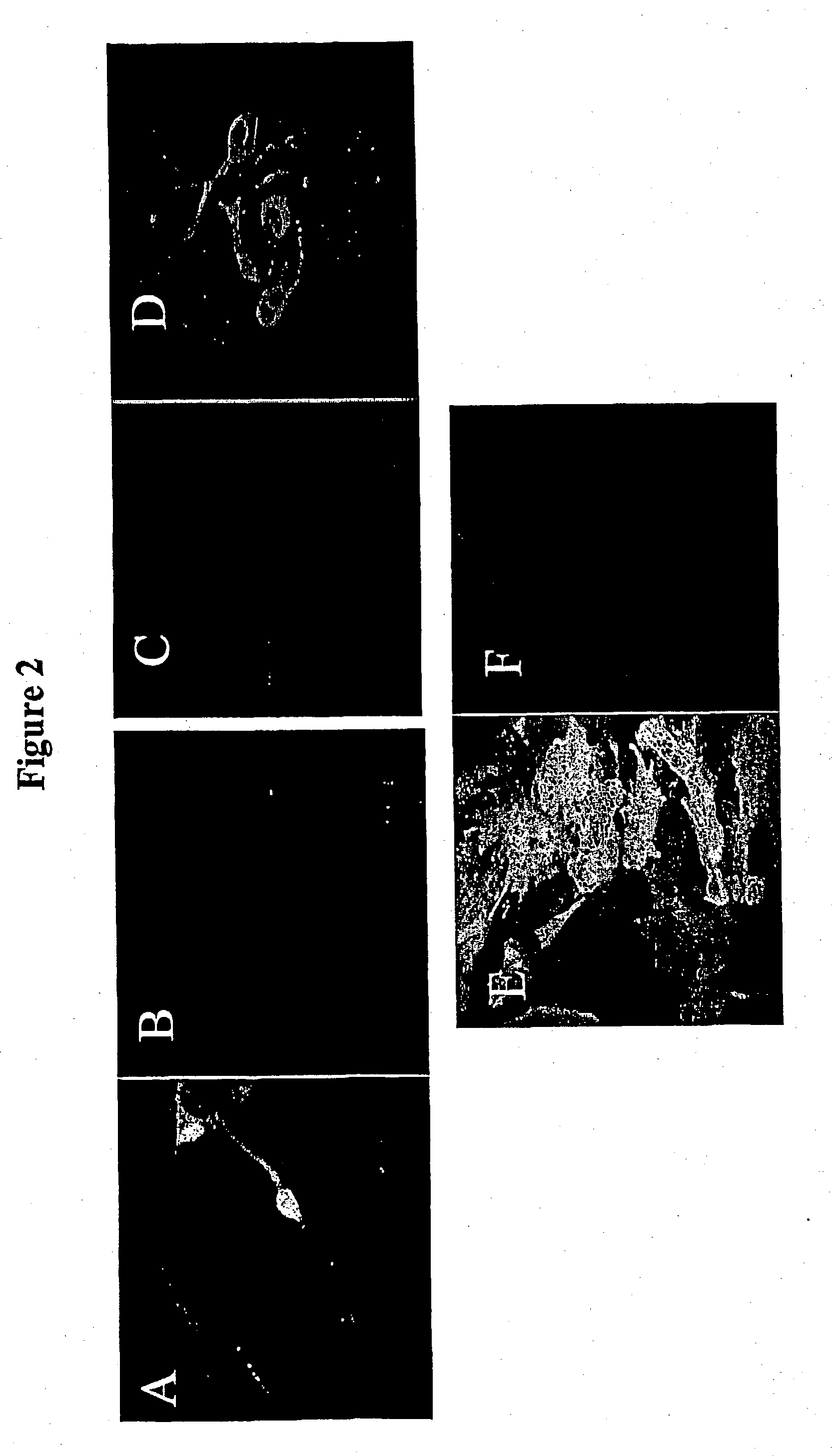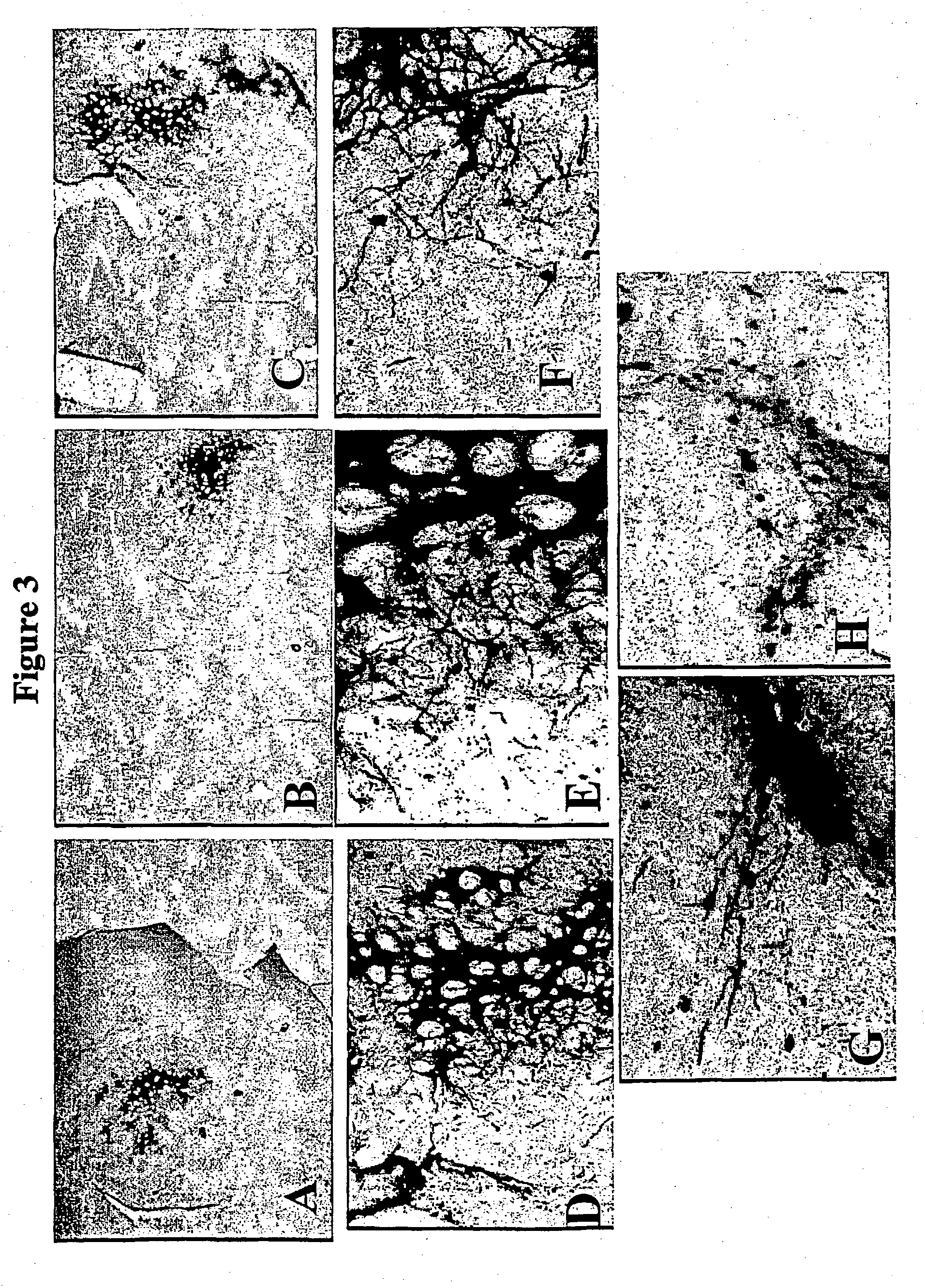Vector system
a technology of valve system and valve body, applied in the field of valve system, can solve the problems of limited efficacy and reproducibility of procedures, no satisfactory cure for parkinson's disease, and limited functional recovery
- Summary
- Abstract
- Description
- Claims
- Application Information
AI Technical Summary
Benefits of technology
Problems solved by technology
Method used
Image
Examples
example 1
Transduction of Presumptive Dopaminergic (TH+) Neurons in Rodent Mesencephalic Cultures
[0330] Methods Mesencephalic cultures: Cultures are prepared exactly as described by Lotharius et al. (1999) (J. NeuroSci. 19:1284-1293). Briefly, the ventral mesencephalon was removed from embryonic day 14 (E14) CF1, murine embryos (Charles River Laboratories, Willington, Mass.). Tissues are mechanically dissociated, incubated with 0.25% trypsin and 0.05% DNase in phosphate buffered saline (PBS) for 30 minutes at 37.degree. C., and further triturated using a constricted Pasteur pipette. For immunocytochemistry, cells are plated at a density of 50,000 cells per 35 mm microwell plate (1.25.times.103 cells / mm.sup.2). All plates are pre-coated overnight with 0.5 mg / ml poly-d-lysine followed by 2.5 mg / ml laminin for 2 hours at room temperature. Initial plating is done in serum-containing medium consisting of 10% fetal calf serum in DMEM:F1 supplemented with B27 additive (Life Technologies, Gaithersbur...
example 2
Transduction of the Adult Rat CNS
[0347] Methods
[0348] Stereotactic injection into rat brain In order to examine virally encoded gene expression EIAVlacZ (pONY8Z) pseudotyped with either VSV-G (pRSV67) or Rabies G (pSA91 ERAwt) are stereotaxically microinjected into the adult rat striatum as follows: rats are anesthesized with hypnorm and hypnovel (Wood et al., (1994) Gene Therapy 1:283-291) and injected with 2.times.1 .mu.l of viral stocks (for EIAV IacZ is typically 1-5.times.10.sup.9 t.u. / ml for VSV-G and 6.times.10.sup.8 t.u. / ml for Rabies-G pseudotyped vector) into the striatum, at coordinates: Bregma 3.5 mm lateral, 4.75 mm vertical from dura, and 1 mm rostral, 3.5 mm lateral 4.75 mm vertical using a fine drawn glass micropippette over a period of 2 min. For perinigral (medial lemniscus) injections 2.times.1 .mu.l of viral stocks were delivered at coordinates: 4.7 mm caudal to Bregma, 2.2 mm lateral, 7 mm vertical from dura and 5.4 caudal, 2.2 lateral and 7.5 mm vertical. The p...
example 3
Isolation of Novel Trophic Factors
[0362] A VSV-G pseudotyped lentiviral vector system is constructed as described in Example 1, and used to express a cDNA library. A retroviral stock supernatant is produced by a transient method (as described above) and used to transduce primary rat ventral mesencephalic cultures established under low MOI as described in example 1. The expression of a secretable factor that acts as a trophic factor for dopaminergic neurons is determined in these cultures by measuring THE neurons per cm.sup.2 on grids after 12 or 21 days culture in minimal media (the trophic factor prevents naturally occuring apoptosis). In addition changes in morphology of TH+ neurons are followed (such as more extensive neurite outgrowth and increased cell body size). Similar effects as observed with GDNF are used as a positive control.
PUM
| Property | Measurement | Unit |
|---|---|---|
| Fraction | aaaaa | aaaaa |
| Fraction | aaaaa | aaaaa |
| Fraction | aaaaa | aaaaa |
Abstract
Description
Claims
Application Information
 Login to View More
Login to View More - R&D
- Intellectual Property
- Life Sciences
- Materials
- Tech Scout
- Unparalleled Data Quality
- Higher Quality Content
- 60% Fewer Hallucinations
Browse by: Latest US Patents, China's latest patents, Technical Efficacy Thesaurus, Application Domain, Technology Topic, Popular Technical Reports.
© 2025 PatSnap. All rights reserved.Legal|Privacy policy|Modern Slavery Act Transparency Statement|Sitemap|About US| Contact US: help@patsnap.com



